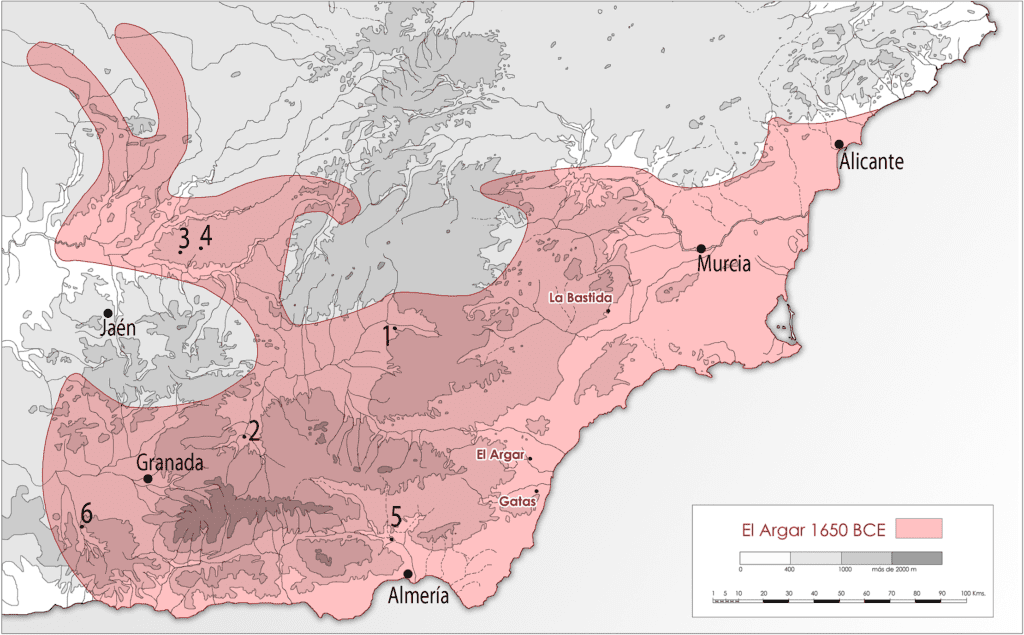New research is shedding light onto the social and agricultural customs of early Bronze Age societies.

Image credits Corina Knipper et al., (2020), PLOS One.
The El Agar society is known from a site in the south-western corner of the Iberian peninsula (today’s Spain). It is believed, however, that it held cultural and political sway over a larger area during its day, from 2200-1550 cal BCE. It also developed sophisticated pottery and ceramics, which they traded with other tribes in the Mediterranean region.
New research based on El Agar gravesites and the layouts of their settlements reports that it was likely a strongly-hierarchical society that revolved around complex, “monumentally fortified” hilltop settlements. The findings showcase the potential use of including trophic (food) analysis in anthropology, and help to reveal the complexity that societies in this period could achieve.
Farming for success
“It is essential to not only investigate human remains, but also comparative samples of different former food stuffs as well as to interpret the data in the light of the archaeological and social historical context,” explains Dr. Corina Knipper from the Curt Engelhorn Center Archaeometry, the paper’s lead author.
The team used carbon dating and nitrogen isotope analysis on artefacts recovered from two El Algar hilltop settlements: a large fortified urban site (La Bastida, in today’s Murcia region) and a smaller settlement at Gatas (in today’s Almería region). The samples analyzed include remains from 75 different individuals across all social levels, 28 domestic animal and wild deer bones, 75 grains of charred barley and 29 grains of charred wheat. All the samples hail from the middle to late El Algar civilization.
The findings showed no significant difference in isotope values between males and females, which is indicative of the fact that both genders shared similar diets. However, the team did find a difference between individual social strata — remains from individuals that made up the elite of La Bastida showed higher levels of both carbon and nitrogen than their peers. This could be indicative of individuals here eating more animal-based products (nitrogen concentrates the farther up you go along the food chain). However, the team further reported that while the nitrogen values for barley were similar at both sites, domestic animals at La Bastida showed higher nitrogen values. This means that the same general diet at both sites could still have resulted in the different nitrogen levels seen.
The latter view is further strengthened by the finding that these communities relied heavily on cereal farming, which they only supplemented with livestock. Analysis of the wheat and barley suggests that the landscape they grew in were dry and unirrigated, but likely fertilized with animal manure, judging from the high nitrogen levels they contain. Cereals and their by-products also seem to have provided most of the forage of domesticated animals (sheep, goats, cattle, and pigs).
The study is based on a small sample size, which limits the reliability of the results. However, it does highlight the role trophic chain analysis plays in helping archeologists piece together the past from human remains. It also goes a long way to show that El Algar farmers had developed relatively sophisticated practices for their time, which allowed them to feed a thriving community.
The paper “Reconstructing Bronze Age diets and farming strategies at the early Bronze Age sites of La Bastida and Gatas (southeast Iberia) using stable isotope analysis” has been published in the journal PLOS One.






